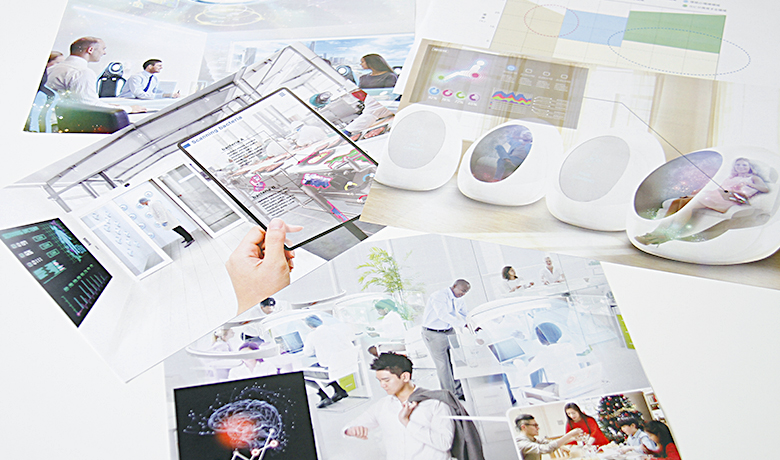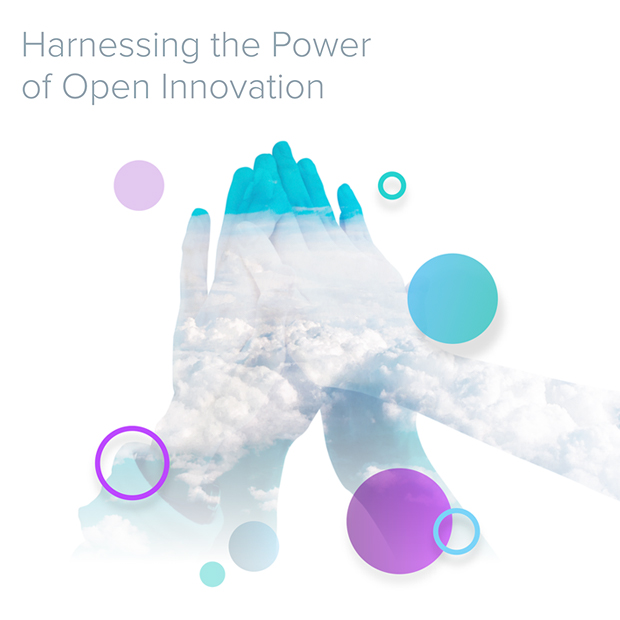
Striving for a Wondrous, More Exciting User Experience
At Daikin, we are dedicated to creating new value by "visualizing" invisible air, thus providing high-quality experiences and excitement the likes of which our customers have never seen before. Developing new user experiences and incorporating them in products and services, however, is easier said than done.
In this article, we'll look at the ideas behind user experiences and how these experiences are designed. To begin, let's look at influential processes and points obtained from past initiatives.

Getting to the Heart of Feedback from the Elderly, Frequent Opponents of Air Conditioners
The user experience (UX) is not something a manufacturer is able to provide to customers unilaterally. Instead, the customers' expectations and ideas based on customer experiences are obtained, and these expectations and ideas are then converted into services and designs meant to exceed the original expectations. As such, fully understanding the feelings of customers and gathering feedback―both verbal and unspoken―are important aspects manufacturers must address in the design process.
One example of this is the remote control for Daikin's "RakuAir" Series of air conditioners. With a focus on the fact that a large number of elderly people develop heat stroke indoors from not using air conditioners in the heat of summer, Daikin developed this remote control to protect the health and safety of customers.
First, we spoke with numerous elderly individuals and explored the reasoning behind their choices to not use air conditioners. The first answers we received were, "I get cold as the temperature of the room drops" and "The remote control is difficult to operate." Our development team addressed these responses directly by creating a prototype remote control with larger buttons, larger letters, and fewer functions. However, when shown to those customers who provided the original feedback, the team received a surprisingly large amount of negative feedback with comments like, "Remote controls with such large buttons and letters are ugly," "It looks like a remote control designed specifically for the elderly," and "I'm embarrassed to let my grandchildren see this."
What caused this large disparity to arise? After developing various hypotheses and incorporating those ideas in a second prototype, we began to realize that what customers really wanted was an ordinary remote control that elderly people could use with ease.
So, the development team stopped focusing on reducing functions and making buttons and letters larger. Instead, the call center staff and design psychology experts were called upon to study carefully what a remote control that can be used even by the elderly would look like.
The result was the RakuAir remote control, which subtly increased customers' desire to use the remote control.
The control incorporates concepts based in psychology that make it seem simple to those who are not so adept with remote controls, and multi-functional to those more familiar with the devices.
In addition to operability, the built-in healthcare functions help prevent heat stroke by continuously monitoring the room temperature. All of these elements work together in a way that overcomes previous dissatisfaction and not only entices people to use the remote control but also makes them proud to have such a device in the first place. Our innovative model, which embodies our reevaluation of the user experience, gained a lot of attention and was awarded not only a Good Design Award but also a Universal Design Award (IAUD Award).
As the creation of this remote control shows, Daikin places a high value on the unspoken input of our customers while quickly progressing through the prototype stage in order to craft unique user experiences.

Inspiring Unique User Experiences through House Calls
The search for potential needs that customers and society have not yet noticed opens the door to user experiences unlike anything previously available. As an example, consider the development of Daikin's Room Dryer, which does not require collected moisture to be manually drained. The idea behind this product arose from home surveys carried out during development of the Ururu Sarara room air conditioner.
In the initial surveys, it came as no surprise that households utilizing air-conditioning heating suffered from dry air and required humidification. However, in situations with air-tight housing, north-facing rooms and stopping heating in living rooms caused a higher frequency of dew condensation and fungi growth.
This led to the realization that residences in winter require not only humidification but also dehumidification. As such, we proposed a new dehumidifier that protects the health of both the residents and the home.
The health of the home required two points to be addressed: Disposal of water should be unnecessary, and the dehumidifier should be usable even in winter.
However, current portable dehumidifiers stop operating when the collection tank becomes full, making non-stop operation impossible in situations where the residents are absent. Conventional air conditioners, meanwhile, are not capable of dehumidifier operation in the lower outside temperatures of winter.
Instead we focused our attention on technology that allowed moisture to be directly discharged outdoors without the need for changing the moisture into water. As such, we removed the tank from the design, eliminating the need to empty the collected water. This resulted in a novel idea for a dehumidifier, a means of protecting the health of the home in a way that is different from conventional air conditioners and portable dehumidifiers.
The success of this idea―in addition to the design ideas―could be attributed to the data acquired through Daikin's detailed home surveys.

Crafting a New Culture from the User Experience
When designing a new user experience, the common trend is to discover the unspoken needs of users―who often don't even realize the need is there―and to propose a new solution to that need. In order to discover such unspoken needs, it is essential that we fully consider and evaluate the lifestyles of customers. This of course can take some time, but the reward upon discovering the as-yet unnoticed need is truly satisfying.
During the Edo period, Omi merchants practiced business according to the philosophy of "sanpo yoshi," which held that "good for the buyer is good for the seller, which is good for society." At Daikin, we strive to adopt this philosophy in hopes of creating new trends for society.
As such, our focus in recent years to speed up the creation of user experiences has been to "Visualize the world of the future we want to create."
Specifically, this means creating an illustration similar to a scene from a movie, and then drawing out potential ideas by sharing that illustration with customers and engineers.
We also use this opportunity to clarify our current design positions and to see how those positions fit in the subsequent actions to be taken. Achieving this goal allows us to share with engineers any design development goals that would otherwise be difficult to get approved, thus boosting research and development from the customers' point of view.
Continuing to expand and strengthen these abilities while maintaining Daikin's unique user experience creation process will give us the opportunity to develop new trends in value creation through design ideas.













